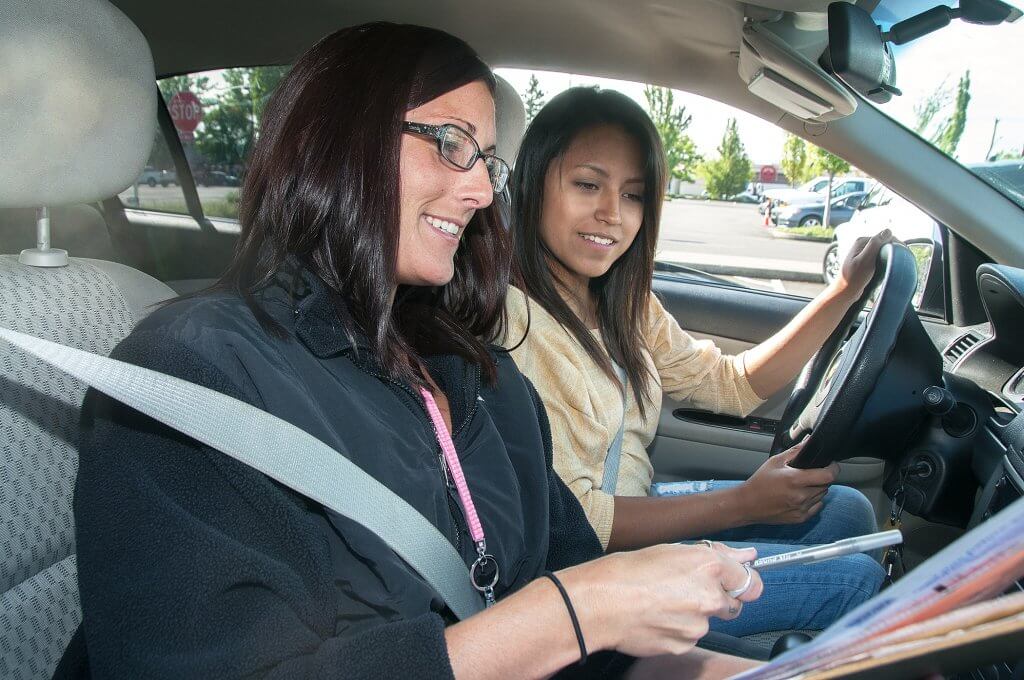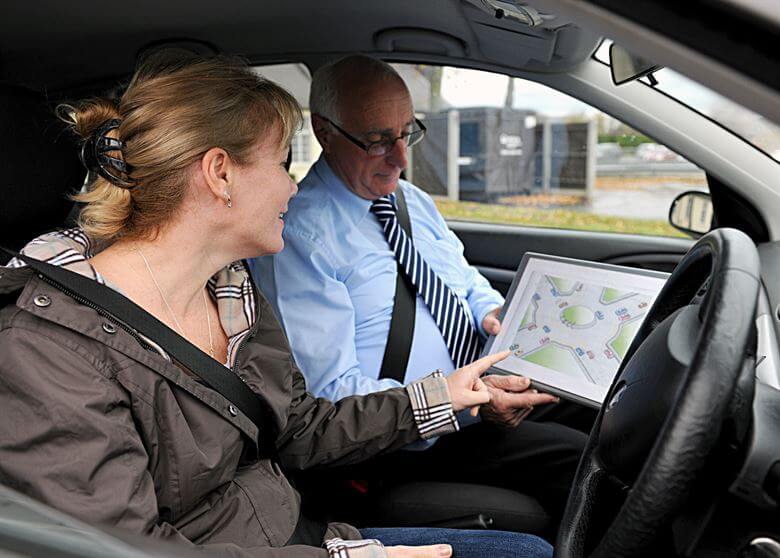So you’ve failed your driving test, now you’re desperately searching the internet for answers as to why and what the hell you’re meant to do next. Failure is not an easy thing to deal with, but it’s important to remember it’s a learning curve which you’re most definitely not experiencing alone.
In this guide we’ll talk you through what you should be doing after failing your driving test, with some advice from our top driving instructors.
How many people fail their driving test first time?
Although you may feel alone in your failure, trust us when we say it’s more common than you think. In fact, according to the latest figures released by the Driver and Vehicle Standards Agency (DVSA), 53.3% of all people who took their practical driving test between March 2017 – July 2018 failed the test first time.
With driving test nerves and other drivers to contend with, it’s no surprise that over half of us are failing the test the first time around. So don’t beat yourself up about it, it’s said that those who don’t pass their test first time are better drivers anyway.
“Pupil’s tend to find the `L` test a stressful experience and will normally stall during the test due to nerves.”
– H, Training Director at 4 Wheelz. ORDIT (Official Register of Driving Instructor Trainers) DVSA Grade A registered
Why did I fail my driving test?
In order to improve you need to identify where you have gone wrong. Which is why it is so important to listen to the examiner’s feedback after they’ve uttered those earth-shattering words ‘you’ve failed’.
In the moments following the end of the test they will provide crucial feedback on where you went wrong – perfect pointers on where to improve in your following driving lessons. At this point it is usually a good idea for your driving instructor to come and join you, so they can take in any information you may miss or forget – which can often happen after hearing bad news.
Minor and major faults and what they mean
Any fault could be a driving fault, serious fault or dangerous fault. The situation in which the fault occurs in, would dictate whether the fault is classed as a minor or major fault.
There are three types of faults:
- A dangerous fault includes anything which causes danger to you, the examiner, the public or property and is the most serious of all the faults. This is known as a major fault. So, for example, a pupil fails to check his exterior right door mirror before moving right around a parked car. But there is a motorbike close behind and the motorbike rider has to brake. This has caused another road user to take avoiding action and this would be assessed as a dangerous fault, or a major fault.
- A serious fault includes anything which could be potentially dangerous to you, the examiner, the public or property. A serious fault is also known as a major fault. In this example a pupil fails to check his exterior right door mirror before moving right around the same parked car, however this time there is a motorbike well behind. As the motorbike rider could be affected this would be assessed as a serious fault, or a major fault.
- A driving fault includes faults which are not potentially dangerous. These are known as minor faults in your test. If you repeatedly make the same fault it can become a serious fault. For this example, a pupil fails to check his exterior right door mirror before moving right around a parked car. But there is no other road user about that can be affected, so this is assessed as a driving fault, or a minor fault.
On the driving test a pupil can have 15 driving faults (minor faults) and still pass. However any serious or dangerous faults (major faults) would fail a pupil. An accumulation of driving faults (minor faults) in one area, i.e. checking mirrors before change of direction, would show there is a pattern developing in this area and sooner or later this will lead to the fault being serious or dangerous. Therefore this would be assessed as serious fault and lead to a fail.
What should I do next?
Following failing your driving test the worst thing you can do is put off getting back into the car. Leave it no more than a few days before you have another driving lesson. Leaving it any longer can cause anxiety and nerves around driving to build up, making it harder to get back into that driving seat. Dust yourself up and get back to it.
Remember, your driving instructor would not have recommended that you book your driving test if they did not believe that you were ready to take it – they had the faith in you, you just need to find it in yourself.
“Loss of confidence can be a major problem upon failing a driving test. This can be largely overcome by ‘getting back on the horse’ as soon as possible. If you don’t your driving standard is likely to fall and you could end up having to pay for many more lessons to bring you back up to standard.”
– H, Training Director at 4 Wheelz. ORDIT (Official Register of Driving Instructor Trainers) DVSA Grade A registered
When can I rebook my driving test?
Don’t put off rebooking your driving test retake, try and book it as soon as possible. It will need to be a minimum of 10 days away, which is the perfect amount of time to make improvements on the points you struggled with in your previous attempt.
Some test centres, especially the larger, busier ones, will have a longer waiting list, which may mean you’re not able to take the test again for another four weeks. If there is a waiting list book the earliest test slot available to suit you. You can then use the DVSA’s ‘Change your driving test appointment’ service, where you can find an earlier driving test than the one you’ve already booked – these are known as cancellation appointments.
“Your driving instructor should rebuild your confidence by showing how you’re able to carry out driving tasks safely and under control. They will help you to interpret the driving test report and focus on what areas need addressing. The instructor can also review the specific areas of the route where you failed.”
– H, Training Director at 4 Wheelz. ORDIT (Official Register of Driving Instructor Trainers) DVSA Grade A registered
Reasons people fail their driving test
There are a number of reasons people fail their driving tests, and in our 23 years as a driving school we have seen some frankly bizarre reasons. However there are some we see time and time again, take a look at the below – you may have experienced one of these yourself.
- Observations at junctions: Pulling out of junctions before observing other drivers around you, causing other road users to slow down
- Use of mirrors: Seeing something in your mirrors, but failing to act on it, probably due to nerves – from approaching cyclists to changing lanes as a car enters a dual carriageway from a slip road
- Driving too slow: Trying to do everything correctly, which as a result causes you to drive too slowly for the situations and conditions around you
- Hesitation at junctions: As a result of the above point you may also end up not taking advantage of safe and suitable gaps to move off
- Awareness and planning: Approaching hazards too fast as you have not forward planned, as a result you spot the hazard too late
- Moving off safely: Moving away from the side of the road when not safe, i.e. not checking your mirrors or your blind spot
- Reverse park: Unable to reverse into a parking space accurately
- Response to traffic lights: Approaching green lights too quickly or not moving off when the lights change to green
- Steering: Clipping the kerb or not following the kerb line
- Control when moving off: Repeatedly stalling when moving off. If this is something you’re struggling with don’t miss our guide on how to stop stalling.
It really is a case of ‘if at first you don’t succeed, try, try again’. The driving test isn’t meant to be easy, so if you struggle to pass it don’t be disheartened. Keep pushing on as it’ll make you a stronger, better and safer driver in the long run.


